I'm drawing F1/F2 vowel graph (an example is here). Each vowel has several points/values, and I'd like to draw an ellipse around the points, so that:
- ellipse covers at least 80% of points (ie. in the picture above "i" has several values, but they are contained within the ellipse).
- is positioned in the direction on min/max values.
I may be complicating the stuff, but trigonometry and maths are Greek to me. Below is what I've tried.
Ellipsoidhull()
Ellipsoidhull() is in the package package "cluster". If I pass to a function a matrix with F1 and F2, it seems to calculate the center of the ellipse, but the directional values are huge. For example:
> olm
ol.f1 ol.f2 # f1/f2 data
[1,] 501.3 850.5
[2,] 488.5 906.5
[3,] 456.3 857.0
[4,] 505.8 895.3
[5,] 499.5 898.0
[6,] 431.8 891.5
[7,] 416.3 870.5
[8,] 506.0 887.8
[9,] 500.3 985.8
[10,] 513.5 955.3
[11,] 531.5 958.0
[12,] 483.0 847.3
[13,] 533.3 982.8
[14,] 480.8 881.8
[15,] 484.3 884.5
If passed to ellipsoidhull:
> ellipsoidhull(olm)
'ellipsoid' in 2 dimensions:
center = ( 480.69 904.33 ); squared ave.radius d^2 = 2
and shape matrix =
ol.f1 ol.f2
ol.f1 2115.5 1449.5
ol.f2 1449.5 3558.2
hence, area = 14636
I guess it wouldn't be hard to figure out how to draw an ellipse, but the "shape matrix" (max/min radius values?) is too high. Btw, thanks to #R on Freednode for the tips.
Source code from EMU-R
Then, I've taken a look into the code of EMU-R, R package that works with EMU that can, amongst other things, draw F1/F2 with ellipsoids. The code that seems to do that is here but I don't understand how the ellipse is drawn.
Any help appreciated.
